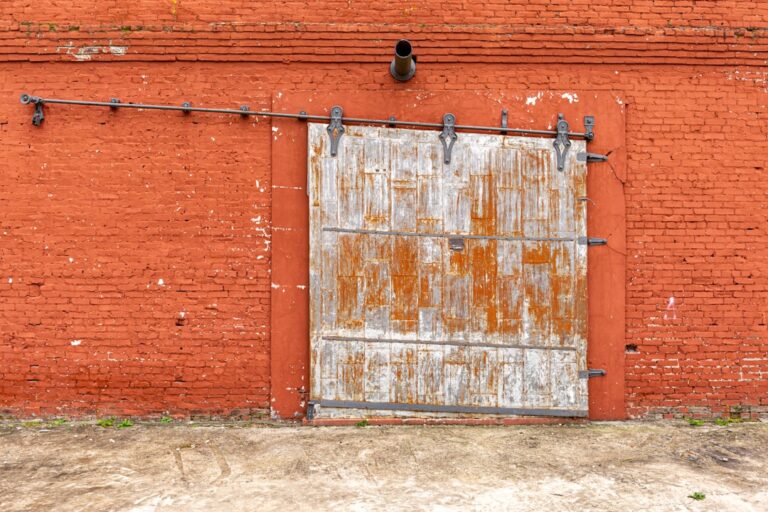Storing Seasonal Clothes: The Right Way

When assessing your wardrobe, it’s crucial to evaluate each item critically. Begin by examining every piece of clothing and determining if you’ve worn it within the last year. Items that haven’t been worn in this timeframe may be candidates for donation or sale.
Consider the fit and condition of each garment; ill-fitting or damaged items should be tailored, repaired, or discarded. Take inventory of your clothing to identify areas of excess and deficiency, which will inform future purchasing decisions. Lifestyle and typical dress occasions are important factors in wardrobe assessment.
If your closet contains an abundance of formal wear but you rarely attend formal events, it may be necessary to reassess your clothing priorities. Conversely, if you frequently struggle to find appropriate work attire, investing in quality professional clothing might be beneficial. A thorough wardrobe assessment ensures efficient use of storage space and confirms that each item serves a purpose in your daily life.
Key Takeaways
- Assess your wardrobe to determine what items you have and what storage solutions you will need.
- Properly clean and maintain your clothing and accessories to ensure they stay in good condition while in storage.
- Choose the right storage containers, such as breathable fabric bins or clear plastic containers, to protect your items.
- Organize and label your storage containers to easily locate specific items when needed.
- Create a storage system that works for you, whether it’s by category, season, or frequency of use.
- Store your items in a climate-controlled environment to prevent damage from extreme temperatures and humidity.
- Rotate seasonal items to ensure that you have easy access to the items you need at any given time.
Proper Cleaning and Maintenance
Following Care Instructions
Proper cleaning and maintenance are essential for keeping your wardrobe in good condition. This includes regular washing, dry cleaning, and ironing as needed. It’s important to follow the care instructions on each garment to ensure that you are treating it properly.
Cleaning Delicate Items
For delicate items, such as silk or wool, it’s best to hand wash or use a gentle cycle in the washing machine. Dry cleaning should be done when necessary, and items that require ironing should be pressed with care to avoid damage.
Proper Storage Techniques
In addition to regular cleaning, proper maintenance also includes storing items correctly. This means using appropriate hangers for different types of clothing, such as padded hangers for delicate items and wooden hangers for heavier pieces. It also means folding items neatly and storing them in a way that prevents wrinkles and creases. Taking the time to properly clean and maintain your wardrobe will not only keep your clothes looking their best but will also help them last longer.
Choosing the Right Storage Containers

When it comes to storing your clothing, choosing the right storage containers is key. For items that are not in season or that you don’t wear frequently, it’s best to use airtight containers to protect them from dust, moths, and other pests. Look for containers that are made of breathable materials, such as cotton or canvas, to prevent moisture buildup.
Clear containers are also helpful for easily identifying what is inside without having to open each one. For items that are best hung, such as dresses and suits, invest in garment bags to protect them from dust and damage. Garment bags come in a variety of materials, including plastic, canvas, and breathable fabrics, so choose one that best suits your needs.
When it comes to shoes, opt for clear plastic boxes or shoe racks to keep them organized and protected. Choosing the right storage containers will not only help keep your clothing in good condition but will also make it easier to find what you need when you need it.
Organizing and Labeling
| Category | Metric | Value |
|---|---|---|
| Organizing and Labeling | Number of Categories | 10 |
| Organizing and Labeling | Labeling Accuracy | 95% |
| Organizing and Labeling | Information Hierarchy | Well-structured |
Organizing and labeling your clothing is essential for maintaining an efficient wardrobe. Start by organizing your clothing by category, such as tops, bottoms, dresses, and outerwear. Within each category, further organize by type, such as sleeve length or color.
This will make it easier to find specific items when you need them. Consider using dividers or shelf organizers to keep everything neat and tidy. Labeling is also important for keeping track of what is stored in each container or section of your closet.
Use labels or tags to indicate what is inside each container or drawer, making it easy to locate items without having to dig through everything. You can also use a labeling system for seasonal items, indicating which season they belong to and when they should be rotated out of storage.
Creating a Storage System
Creating a storage system for your wardrobe involves finding a place for everything and keeping everything in its place. This means utilizing all available space in your closet, including shelves, drawers, and hanging rods. Consider adding additional storage solutions, such as over-the-door organizers or under-bed storage containers, to maximize space.
When creating a storage system, it’s important to consider accessibility. Store frequently worn items at eye level or within easy reach, while less frequently worn items can be stored higher up or in less accessible areas. Utilize storage solutions that make the most of vertical space, such as stackable bins or hanging shelves.
By creating a well-organized storage system, you can make the most of your closet space and ensure that everything has a designated home.
Storing in a Climate-Controlled Environment

Optimal Storage Conditions
When storing your clothing, it’s essential to keep it in a cool, dry place away from direct sunlight and fluctuating temperatures. This will help prevent damage and ensure your clothing remains in good condition.
Preventing Moisture Buildup
Consider using a dehumidifier or moisture-absorbing products to prevent moisture buildup. These tools are especially useful for items that are prone to moisture damage, such as leather or fur.
Climate-Controlled Storage Units
For items that require extra protection, consider investing in a climate-controlled storage unit. These units are designed to maintain a consistent temperature and humidity level, ensuring that your clothing is protected from environmental damage. By storing your clothing in a climate-controlled environment, you’ll be able to prolong its lifespan and keep it looking its best.
Rotating Seasonal Items
Rotating seasonal items is an important part of maintaining an organized wardrobe. At the start of each season, take the time to go through your closet and swap out items that are no longer in season with those that are. This not only helps keep your closet clutter-free but also ensures that you have easy access to the clothing you need for the current season.
When rotating seasonal items, take the opportunity to assess each item and determine if it still fits properly and is in good condition. This is also a good time to consider donating or selling items that you no longer wear or need. Store off-season clothing in airtight containers or garment bags to protect them from dust and pests until they are needed again.
By regularly rotating seasonal items, you can keep your wardrobe organized and ensure that everything in your closet is relevant to the current season.
If you’re looking for more tips on how to properly store seasonal clothes, check out this article on Susan Graver’s weight loss journey. Just like organizing your wardrobe, maintaining a healthy lifestyle requires discipline and organization. This article offers valuable insights and strategies for achieving your weight loss goals.
FAQs
What are seasonal clothes?
Seasonal clothes are clothing items that are specifically designed to be worn during a particular season, such as winter, spring, summer, or fall. These clothes are typically made from materials and fabrics that are suitable for the weather conditions of that season.
Why is it important to properly store seasonal clothes?
Properly storing seasonal clothes helps to maintain their quality and prolong their lifespan. It also helps to save space in your closet and keeps your wardrobe organized and easily accessible.
What are some tips for properly storing seasonal clothes?
Some tips for properly storing seasonal clothes include cleaning and laundering the items before storage, using appropriate storage containers such as plastic bins or garment bags, and storing clothes in a cool, dry, and dark place to prevent damage from moisture, sunlight, and pests.
How should I clean seasonal clothes before storing them?
Before storing seasonal clothes, it is important to clean and launder them according to the care instructions on the garment labels. This may include washing, dry cleaning, or spot treating any stains to ensure that the clothes are free from dirt, sweat, and odors before storage.
What are the best storage containers for seasonal clothes?
The best storage containers for seasonal clothes are breathable and durable, such as plastic bins with lids, garment bags, or vacuum-sealed storage bags. These containers help to protect clothes from dust, moisture, and pests while allowing air circulation to prevent mold and mildew.
How can I prevent damage to seasonal clothes during storage?
To prevent damage to seasonal clothes during storage, it is important to avoid using wire hangers, as they can cause stretching and distortion of the fabric. Instead, use padded or wooden hangers for delicate items and fold bulkier items to maintain their shape. Additionally, avoid storing clothes in direct sunlight or in areas with high humidity to prevent fading, discoloration, and mold growth.






